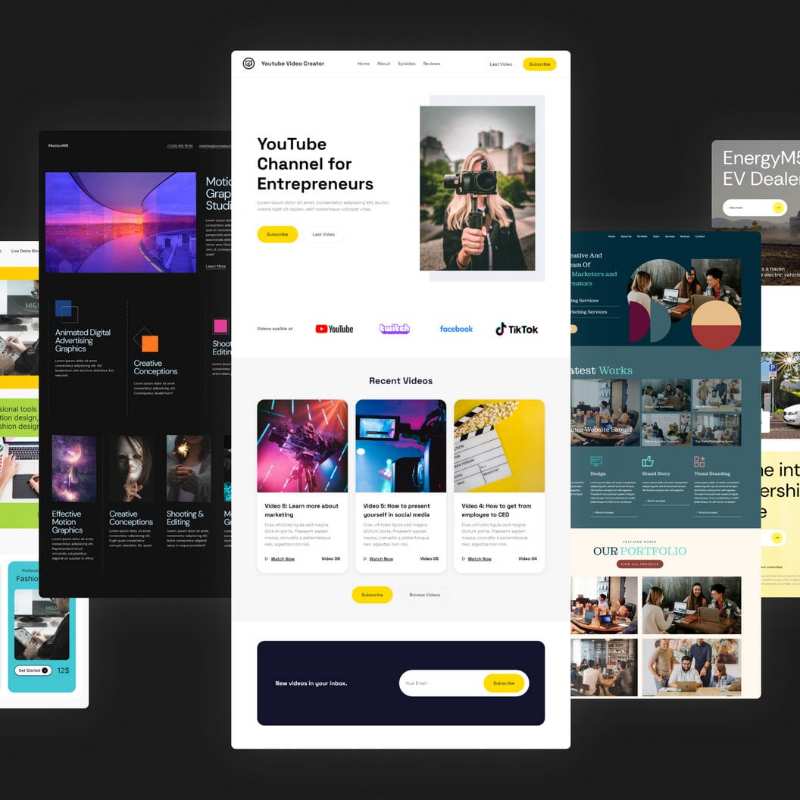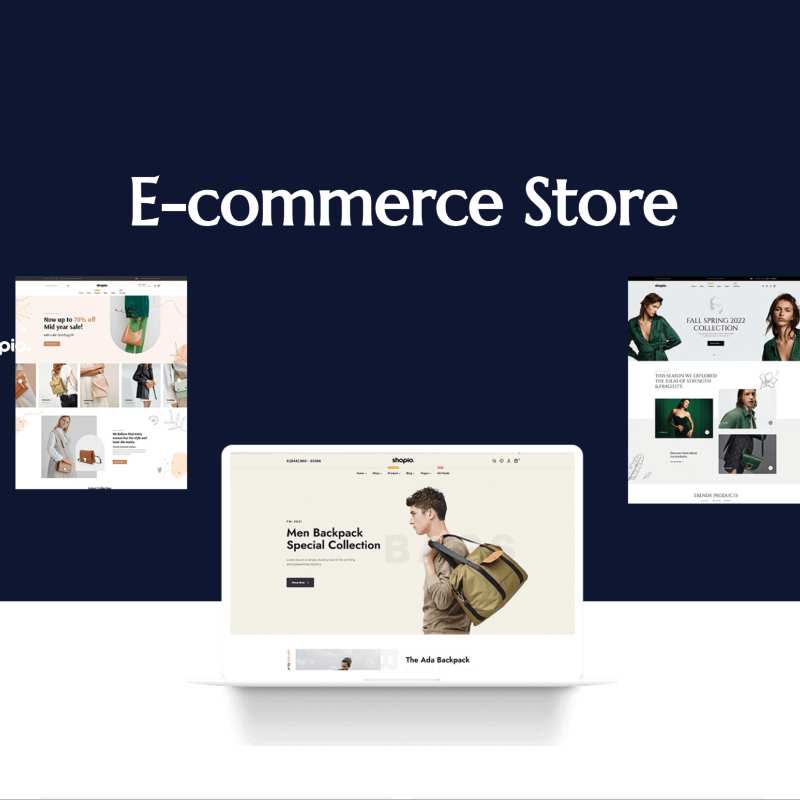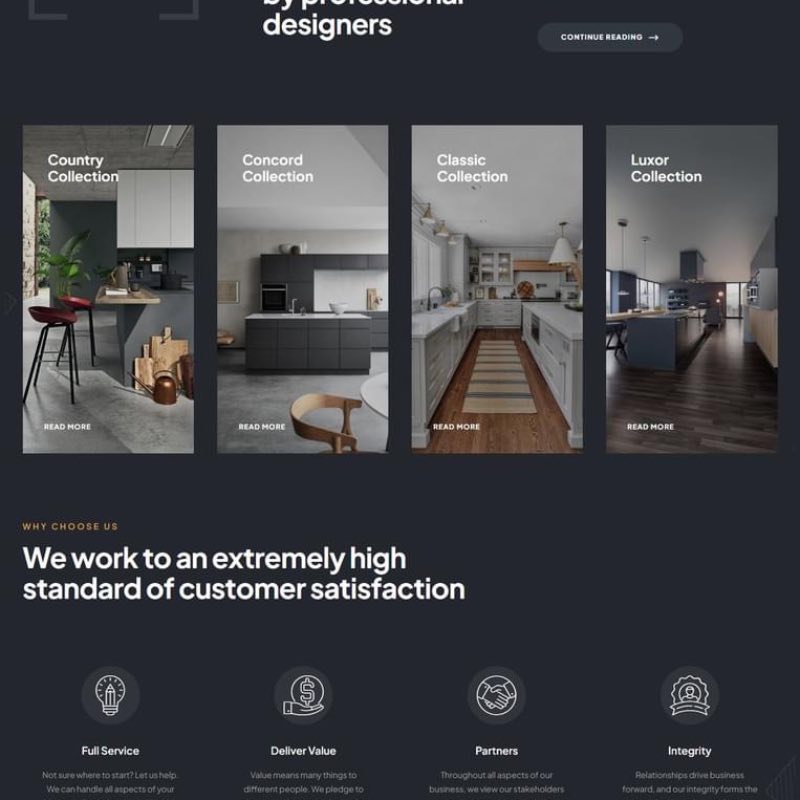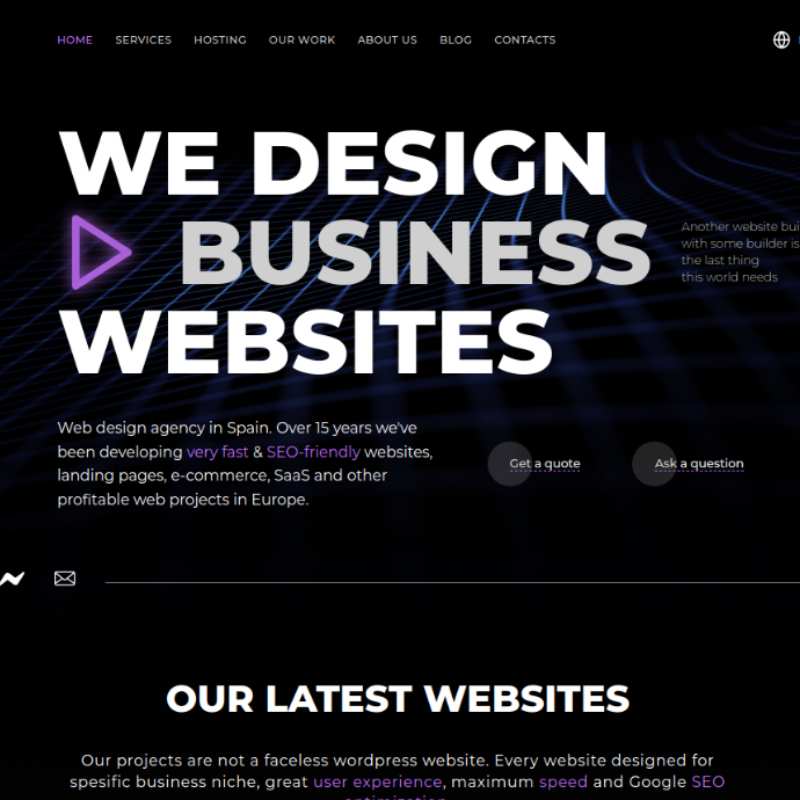Sales indeed serve as the lifeblood of any business, and this axiom holds true for e-commerce as well. The vitality of a successful e-commerce store lies in its ability to convert. Conversion, in this context, refers to the art of transforming mere website visitors into valuable paying customers. If your e-commerce store isn't performing well in this regard, it implies a missed opportunity for generating sales and revenue.
Sales indeed serve as the lifeblood of any business, and this axiom holds true for e-commerce as well. The vitality of a successful e-commerce store lies in its ability to convert. Conversion, in this context, refers to the art of transforming mere website visitors into valuable paying customers. If your e-commerce store isn't performing well in this regard, it implies a missed opportunity for generating sales and revenue.
Now, let's delve into the crucial question: How can you ensure that your e-commerce store converts effectively? In the following discourse, we will proffer a collection of invaluable insights and strategies aimed at optimizing your online store to achieve higher conversion rates.
Building a High-Converting e-commerce store
Are you in search of constructing an e-commerce store that achieves successful conversions? If that's the case, you've come to the right place. In this article, we will share some of the most effective methods for establishing an e-commerce store that excels in converting visitors into customers.
What exactly is meant by 'conversion,' and why does it hold such significance? In the realm of e-commerce, conversion refers to the pivotal process of transforming a mere website visitor into a paying customer. Its importance lies in the fact that it represents the sole avenue through which revenue can be generated from your online store. Without the ability to convert visitors into customers, the revenue stream remains dry.
Numerous factors influence the rate at which conversions occur. Elements such as the design of your website, the products you offer, your pricing strategy, and the efficiency of your checkout process all wield significant influence over your store's conversion performance.
So, what constitutes a commendable conversion rate? As per a survey conducted in 2022, a favorable conversion rate is any figure surpassing 3.2%. This implies that if your store attracts 1000 visitors, you should aim to convert at least 32 of them into paying customers. However, the same survey, encompassing 3223 e-commerce stores, revealed that the average conversion rate barely surpassed 1.4%.
Should you aspire to augment your e-commerce store's revenue, directing your focus towards Conversion Rate Optimization (CRO) is essential. CRO entails the systematic process of increasing the percentage of visitors who undertake the desired action on your website.
To elucidate, let's consider a scenario: Suppose you manage a website selling a range of shirt designs. Your objective is to heighten the number of visitors who add a shirt to their shopping cart and successfully complete the purchase. To achieve this, you might engage in experimentation with diverse product descriptions, images, and pricing structures to determine what motivates individuals to make a purchase.
Now, here's the encouraging news. If your aspiration is to craft an e-commerce store that excels in conversions, there's no need to embark on exhaustive experimentation. At Wacdis, we specialize in e-commerce and have proudly partnered with numerous online stores over the years.
We've meticulously developed a tried-and-trusted process for constructing e-commerce stores that excel in conversions. We possess precise insights into what it takes to establish a store with a stellar conversion performance, and we're eager to impart this knowledge to you in the following sections of this article!
How to Build a High Converting e-commerce store
Our web development experts have provided 10 key things you need to do to create an e-commerce store that converts. We will list them in no particular order and then dive deeper into each one:
- Have quality pages
- Effective CTA buttons
- Include ratings and reviews
- Tempt customers to quick action
- Take advantage of E-commerce features
- Retarget visitors
- Exit-intent pop-ups
- Increase site speed
- Up-sell and cross-sell
- Go Headless
Let's take a closer look at each of these elements so you can start building a high-converting e-commerce store today!
1. Have quality pages
One of the pivotal elements of a high-converting e-commerce store lies in the quality of its pages. This entails the presence of meticulously crafted, informative, and keyword-rich product descriptions. Furthermore, it necessitates the inclusion of top-notch product images that are not only crystal clear but also comprehensively showcase every facet of the product.
Concerning product pages, it is imperative to feature high-quality visuals and videos that impeccably highlight your products. Moreover, your product descriptions should be characterized by clarity, brevity, and persuasiveness. The goal is to convincingly convey to potential customers that your product is essential and offers undeniable value for its price.
Beyond the realm of quality product pages, the importance of a well-crafted homepage cannot be overstated. It serves as the virtual storefront of your e-commerce venture, providing a first impression and encapsulating your brand identity and product offerings. Your homepage should be strategically designed to capture attention and seamlessly guide visitors to the specific products they seek.
The excellence of your other content pages is equally significant. This encompasses pages such as the About Us, FAQ, 'Shipping & Returns, and others. These pages must uphold the same high standards of quality, design, and informativeness. They should be thoughtfully composed to ensure that visitors can effortlessly access the information they require.
2. Effective CTA buttons
Another pivotal element of a high-converting e-commerce store revolves around the implementation of impactful call-to-action (CTA) buttons. These CTA buttons should occupy a prominent position on your e-commerce website, ensuring they are easily visible to visitors. Furthermore, they should be meticulously designed to distinguish themselves from the overall website layout, effectively capturing the attention of users.
The text used on your CTA buttons should embody clarity and brevity. It must convey a concise directive to visitors, explicitly indicating the action you want them to take. Phrases such as "Buy Now," "Add to Cart," or "Sign Up" serve as prime examples of effective CTA button copy, leaving no room for ambiguity.
In addition to having compelling CTA buttons, the design and layout of your e-commerce website should facilitate the seamless discovery of these buttons by visitors. This entails the establishment of a lucid and user-friendly website architecture. Visitors should encounter no hindrance when searching for their desired products or when prompted to take specific actions on your site. The website's layout should be intuitively navigable, ensuring that users can swiftly and effortlessly access what they seek.
3. Include ratings and reviews
Another pivotal aspect of an e-commerce store that excels in conversions involves the incorporation of ratings and reviews prominently within your product pages. Additionally, you can leverage customer testimonials by featuring them on your homepage or other sections of your e-commerce website. For an even more comprehensive approach, consider creating a dedicated testimonials page where you proudly exhibit positive feedback from delighted customers.
The influence of ratings and reviews cannot be overstated. When potential buyers observe that others have not only purchased but also positively endorsed your products, it provides them with essential social proof. This validation bolsters their confidence in the quality and desirability of your offerings. Furthermore, it grants you the opportunity to showcase your satisfied customer base, further reinforcing your brand's trustworthiness.
Incorporating genuine ratings and reviews on your product pages stands as a highly effective strategy for boosting conversions. Nevertheless, it is imperative to ensure the authenticity of these reviews. Attempting to fabricate or manipulate reviews can have detrimental consequences for your reputation and erode the trust of potential customers. It is essential to maintain transparency and integrity when showcasing customer feedback.
4. Tempt customers to quick action
A potent method to elevate conversion rates involves enticing customers through special offers or discounts that necessitate prompt action. This approach hinges on using persuasive language that encourages immediate engagement, rather than deferring decisions. Employing phrases such as "limited time only," "while supplies last," or "act now" can be highly effective in this regard.
For instance, you may consider extending a 10% discount to customers who make a purchase within the next 24 hours. Alternatively, you could offer free shipping for orders exceeding a specific threshold.
The integration of countdown timers emerges as an invaluable tool to cultivate a sense of urgency. This tactic proves particularly potent during sales or promotional events. When visitors perceive that there's a limited window of opportunity to avail themselves of a special offer, it compels them to take action promptly. Countdown timers not only serve as a visual reminder of the fleeting nature of the offer but also provide customers with a tangible incentive to act immediately, rather than postponing their decision.
5. Take advantage of E-commerce features
In the ever-evolving landscape of e-commerce, the user experience stands as the cornerstone of success. Ensuring that your website is not only visually appealing but also user-friendly can significantly impact your conversion rates and overall business growth. Let's delve into some key features and actions that play a pivotal role in achieving this:
Social Sharing and Email Capture: Integrating social sharing buttons and email capture forms on your website is a strategic move. It not only facilitates effortless sharing of your products or content on social media but also helps in building a valuable email list. This dual benefit empowers you to expand your social media following and establish a direct line of communication with your audience.
Payment Integration: Seamless payment integration with leading providers is a non-negotiable feature for any e-commerce venture. It instills trust in your customers, ensuring secure and efficient transactions. Offering a variety of payment options caters to diverse customer preferences, enhancing their overall shopping experience.
Automated Shipping: Streamlining the shipping process through automation not only saves you valuable time but also reduces operational costs. It ensures timely and accurate order fulfillment, leading to satisfied customers who are more likely to return for future purchases.
Google Analytics: Incorporating Google Analytics into your website is akin to having a GPS for your online business. It allows you to track website traffic, analyze user behavior, and gain insights into where your visitors are coming from. Armed with this data, you can make informed decisions to refine your marketing strategies and optimize your site for better performance.
Targeted Email Marketing: Email remains a powerful tool for nurturing customer relationships and boosting conversions. By creating targeted email marketing campaigns, you can deliver personalized content and offers to your audience, enticing them to take action. Segmentation and automation further enhance the effectiveness of your email efforts.
On-Site Offers and Pop-Ups: Engaging your visitors with on-site offers and well-timed pop-ups can be a game-changer. These features create opportunities to capture leads, offer discounts, or promote special deals, all while enhancing the overall user experience. When executed thoughtfully, they can significantly increase conversions and sales.
In conclusion, user-friendly actions and features are not mere additions to your e-commerce website; they are strategic investments in customer satisfaction and business growth. By prioritizing these elements, you not only improve the usability of your site but also create a more enticing and engaging shopping environment for your customers. This, in turn, leads to higher conversions, increased customer loyalty, and a thriving e-commerce business.
6. Use retargeting ads
Retargeting, a dynamic facet of online advertising, offers a strategic approach to engage with individuals who have previously explored your website. This ingenious method involves the placement of a small tracking code, commonly referred to as a pixel, on your website. This pixel discreetly follows and monitors visitors as they navigate the vast expanse of the internet. Subsequently, when you embark on creating an advertisement campaign, you gain the ability to specifically target these prior visitors with your message.
The intrinsic power of retargeting ads lies in their capacity to rekindle the interest of individuals who have already expressed curiosity about your products or services. For instance, consider a scenario where a person visits your website but doesn't proceed with a purchase. With retargeting, you can seamlessly reintroduce your products to them through strategically placed ads during their subsequent online journeys.
Retargeting ads, while exceptional for boosting conversions, extend their efficacy to other critical objectives, such as bolstering brand awareness and nurturing leads. These ads serve as a potent reminder of your brand's presence, leaving a lasting impression on potential customers. Furthermore, they facilitate lead generation by reaching out to individuals who have already demonstrated an initial interest in what your business has to offer.
In essence, retargeting stands as a versatile and invaluable tool in the realm of digital marketing, capable of reaping rewards across various dimensions of your online presence. Whether your aim is to reengage potential buyers, fortify your brand's identity, or cultivate a pool of qualified leads, retargeting ads can be tailored to suit your specific objectives, contributing to the overall success of your online endeavors.
7. Use pop-ups
The utilization of pop-ups is a topic that often sparks debate within the realm of online marketing. Opinions on them are polarized, with some individuals embracing them wholeheartedly, while others express a strong aversion. However, one undeniable fact remains: pop-ups can be remarkably effective.
Pop-ups offer a strategic means to boost conversions because they enable you to deliver a targeted message to your website visitors precisely when it matters most. Consider, for instance, the scenario where a visitor is on the brink of leaving your website without making a purchase. In this critical moment, a well-timed pop-up can intervene, offering a persuasive incentive such as a discount code to entice them into completing their purchase.
Moreover, pop-ups can serve as valuable tools for gathering email addresses from visitors. This information can be instrumental in launching precisely targeted email marketing campaigns, fostering deeper engagement with your audience and ultimately enhancing conversion rates.
The versatility of pop-ups is one of their key strengths. There are numerous ways to employ them effectively, making it essential to experiment and determine what aligns best with your specific business goals. Whether it's re-engaging potential customers, offering incentives, or building an email subscriber list, pop-ups can be tailored to suit your unique objectives, and their undeniable effectiveness in driving conversions should not be underestimated.
8. Increase site speed
Website speed, commonly referred to as "site speed," encompasses the duration it takes for your website to fully load its content. The significance of site speed cannot be overstated, as it wields a substantial influence on the overall user experience. A sluggish website can have detrimental effects on your business.
When your website suffers from slow loading times, it directly impacts user satisfaction. Visitors become impatient, frustrated, and are more likely to abandon your site before even exploring its offerings. This translates to missed opportunities for sales and revenue generation.
Beyond user frustration, a slow website also has repercussions on your search engine ranking. Leading search engines prioritize fast-loading websites, and a lagging site can result in lower visibility in search results. This can significantly hinder your online visibility and customer acquisition efforts.
Therefore, it is imperative to prioritize and optimize your website's speed. Fortunately, there are various strategies you can employ to achieve this goal. In our article titled "Optimising Website Speed - Your Guide To A Lightning-Fast Website", we have compiled a comprehensive guide outlining nine proven methods to enhance the speed of your online store. These actionable tips can be instrumental in optimizing your website's performance, ensuring a smoother and more satisfying user experience while also bolstering your search engine ranking.
By addressing and improving site speed, you not only mitigate user frustration but also lay the foundation for a more successful and competitive online presence.
9. Upsell and cross-sell
Upselling and cross-selling are strategic approaches within the realm of sales and marketing, each with its unique focus and benefits.
Upselling involves enticing a customer who is already interested in a particular product to consider purchasing a more premium or higher-priced version of that product. For instance, if a customer is browsing a selection of jeans on your website, you might present them with an option for a superior, more expensive pair of jeans with enhanced features or quality.
On the other hand, cross-selling revolves around the idea of offering complementary products to what the customer is already considering. In this scenario, if a customer is exploring a pair of shoes on your website, you might suggest adding a pair of socks to their purchase, as they naturally complement the shoes.
Both upselling and cross-selling are potent strategies for increasing conversions and sales for several reasons:
- Enhanced Value: Upselling allows customers to access higher-value products that align with their preferences and needs, providing them with a superior overall experience.
- Increased Revenue: Upselling can boost the average transaction value by persuading customers to opt for more expensive options, directly impacting your revenue.
- Comprehensive Solutions: Cross-selling ensures that customers have all the necessary accessories or complementary items, resulting in a more comprehensive and satisfying shopping experience.
- Customer Satisfaction: When done correctly, upselling and cross-selling can genuinely benefit customers by meeting their needs more effectively, enhancing their satisfaction with your brand.
- Customer Retention: Satisfying customers' needs and providing value through these techniques can foster loyalty and repeat business.
- Targeted Marketing: Since these strategies are applied to customers who are already interested in your products, the likelihood of conversion is significantly higher.
In conclusion, both upselling and cross-selling are valuable tactics to increase conversions and revenue. They capitalize on existing customer interest and preferences, making them a win-win for both businesses and customers alike. When implemented thoughtfully and ethically, these strategies can drive growth and contribute to the overall success of your e-commerce business.
10. Headless ecommerce
Headless e-commerce refers to a concept where the separation of the front end (the visible and interactive part of a website) and the back end (the repository of product information and the checkout process) is implemented. Statistics indicate that adopting a headless architecture within the realm of e-commerce can be a powerful foundation for your online store, delivering exceptional speed and performance.
The advantages of headless e-commerce extend to improving conversion rates, as it enables you to craft a highly customized and user-centric experience for your website visitors. For instance, if your e-commerce platform is used for product sales, you can leverage headless e-commerce to construct tailor-made product pages designed to effectively transform visitors into customers.
Similarly, if you're working with an e-commerce framework that lacks optimization for conversions, headless e-commerce provides the flexibility to create a personalized checkout process engineered specifically for maximizing conversions.
It's noteworthy that the advantages of headless e-commerce are not limited to desktop users alone. It seamlessly extends its capabilities to mobile devices, a crucial consideration given the increasing trend of shoppers transitioning away from traditional desktop computers for their online purchasing needs.
While the primary motivation for transitioning to headless e-commerce may indeed be to enhance conversion rates, it's essential to recognize that this approach offers a multitude of additional benefits. The potential for customization and innovation is virtually limitless.
The best part is that headless e-commerce, despite its intricate-sounding name, is not as complex as it may initially seem. A comprehensive guide spanning over 30 pages has been prepared to demystify all aspects of headless e-commerce, elucidating its nature, its significance as the future of e-commerce, and the tangible benefits it can bring to your business. This guide serves as a valuable resource if you're contemplating the next evolution of your e-commerce venture, aiming to substantially enhance your business operations and outcomes.
Final Thoughts
In conclusion, the concept of headless e-commerce represents a transformative approach to online retail that holds immense potential for businesses seeking to enhance their digital presence. By decoupling the front end and back end of an e-commerce website, headless architecture empowers businesses to offer highly customized and user-friendly experiences to their visitors. The statistics speak volumes, with headless e-commerce on e-commerce platforms proving to be a robust foundation, delivering exceptional speed and performance.
Crucially, this approach offers significant advantages in terms of improving conversion rates. Whether you're looking to create tailored product pages that convert visitors into customers or optimize the checkout process for higher conversions, headless e-commerce provides the flexibility to achieve these objectives.
Moreover, headless e-commerce doesn't discriminate between device types; it seamlessly caters to the growing number of mobile shoppers, ensuring that your business remains accessible and competitive.
While enhancing conversion rates is a primary driver for adopting headless e-commerce, the benefits are far-reaching. The potential for innovation and customization is boundless, making it a dynamic solution for businesses of all sizes and industries.
Perhaps the most compelling aspect is that headless e-commerce, despite its sophisticated terminology, is within reach for businesses willing to explore its possibilities. With comprehensive guides available to unravel its intricacies, businesses can confidently embark on the next stage of their e-commerce evolution, poised to significantly enhance their operations and business outcomes in the digital realm.
More blogposts

You’ll know whether AI web builders are right for you, their real limitations, and when hiring a pro is the smarter choice. No fluff, just the key insights to make the best decision for your website!

A mobile application is an excellent tool for business, given that almost every adult has a mobile phone. Native apps are still leading the market. But what if the budget does not allow tens of thousands of dollars to be allocated for development?! There is a solution...

In today's digital landscape, having a website is akin to having a virtual storefront that's open 24/7. Whether you're a business or an individual looking to establish your online presence, a website is an indispensable tool. Here's why…

Sales indeed serve as the lifeblood of any business, and this axiom holds true for e-commerce as well. The vitality of a successful e-commerce store lies in its ability to convert. Conversion, in this context, refers to the art of transforming mere website visitors into valuable paying customers. If your e-commerce store isn't performing well in this regard, it implies a missed opportunity for generating sales and revenue.

In the world of web design, there are many ways and algorithms for creating turnkey websites. Each developer has their own approach. In this article I will talk about my vision of creating a website that has the right to life.

Due to how busy we are and the size of our team, we haven't changed our website for almost 10 years. It's time to!
08023
